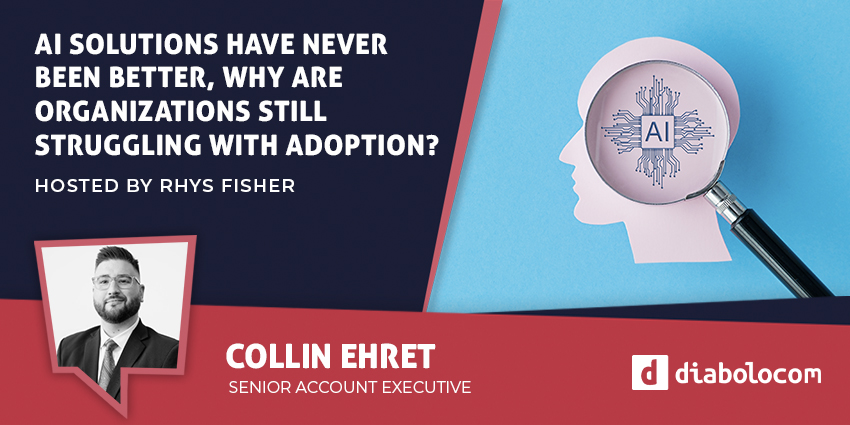With tools capable of effectively responding to human voice and typed queries, businesses can develop more streamlined, convenient customer service strategies. Already, there are endless examples of this in the CX space, from the clever chatbots on business websites to the IVR systems that go beyond the basics of telling customers to “press 1 to speak to an agent”.
As customers become more accustomed to interacting with bots, companies can use this technology to their advantage. In fact, around 80% of CEOs have either altered or intend to change how they interact with clients using conversational AI.
The question is, how do companies begin their adventure into the natural language landscape?
Step 1: Understand the Difference between Chatbots and IVA
The first step in implementing Conversational AI into the contact center is understanding what this technology can actually do. Today, the terms “chatbot” and “IVA” (Intelligent Virtual Assistant) are often used interchangeably. However, there are some significant differences between the capabilities of a basic chatbot and a rich IVA solution.
Traditional chatbots are simple automated tools that leverage FAQ information and automation triggers to resolve customer queries. They don’t pay attention to context, intent, or customer sentiment, and they can’t develop creative solutions to problems or improve their responses over time using machine learning strategies.
While both IVA tools and chatbots can help companies to build a successful self-service strategy, an IVA opens the door to new opportunities. These enhanced AI solutions can leverage natural language processing and understanding capabilities alongside speech recognition and other solutions to create more human-centric experiences.
IVAs can triage customer questions and deliver context to agents dealing with a call. They can route clients to the agent with the skills required to solve an issue, and they can understand more languages, emotions, and intent levels than the typical bot.
Step 2: Define Use Cases for IVAs
Once companies understand what IVAs can do, the next step is deciding where these solutions can deliver the most value to the business and its customers. Notably, while IVAs are growing increasingly more intelligent, thanks to enhanced AI algorithms, they’re still a way of “automating” aspects of the customer journey.
While automation can help streamline and improve experiences in some instances, it may not be suited to all customer/company interactions. Automation generally works best when dealing with transactional customer problems and queries. A conversational IVA can efficiently respond to questions about when a store opens, its delivery policies, and how customers can alter purchases.
It can also automate everyday tasks that agents deal with every day, such as scheduling appointments, sending shipment notifications to consumers, or even collecting data with surveys. The key to success is determining where a conversational bot can streamline a customer’s experience, remove friction points, and where a human may still need to be involved in an empathetic interaction.
Step 3: Define Success Metrics for the IVA Solution
After companies have defined use cases and goals for their IVA or conversational AI technology, they can use these targets to determine how they’ll evaluate the ROI or impact of each tool. For instance, if a company wants to reduce customer effort scores and improve average handling times, it can monitor how frequently IVA technology accelerates an interaction.
With the ability to understand human context and intent, IVAs can deliver benefits from both an employee and customer experience perspective. The right tools can reduce the work employees need to do to research a customer’s problem and deliver personalized service by providing direct access to valuable information.
They can also reduce the interactions that need a live agent, ensuring employees have more time to focus on the tasks that require their creativity and empathy. At the same time, IVA solutions can also improve customer engagement by resolving frequently asked questions faster at a time that’s convenient for the customer. They can boost CSAT and NPS levels and help customers get more value out of each interaction with a company.
Step 4: Explore Conversational AI Solutions
Companies around the world are already seeing significant benefits from conversational AI tools. Around 90% of companies say these solutions help them resolve complaints faster, and 57% of businesses say the tools deliver a high ROI in exchange for minimal effort.
As a result, contact center technology vendors and IT leaders are beginning to roll conversational AI solutions out in various formats. Some answers are specially designed to support multinational companies, with 100s of language options. Others provide a more human experience with different voice avatars for brand strategies.
The right conversational AI solution for each business may vary. Still, it should always be easy for customers and agents, flexible enough to adapt to different business use cases, and intelligent enough to address today’s clients’ challenges. The right IVA will work across various voice and digital channels, empowering teams to maintain their omnichannel strategy.
What’s more, the best solutions will also be able to collect and share valuable information with the business, preserving context and insights throughout the customer journey. A great vendor can even help businesses to make the most out of their strategy with planning, implementation, and training support from a team of AI experts.
Step 5: Implement, Analyze, and Evolve
Once a business chooses the right AI solution provider for their IVA needs, the next step is implementing the technology into the contact center ecosystem. Selecting a solution that can integrate conveniently with back-end tools and conversational technologies is crucial to keep implementation efforts low.
Finding a vendor capable of offering training support for team members new to using an AI solution can be beneficial too. This can help businesses overcome the resistance to technology adoption in the CX sector today. Crucially, the path to conversational AI success doesn’t stop once the solution has been implemented.
As technology and customer expectations evolve, companies should leverage analytics, feedback, and insights to improve their AI strategy consistently. The best toolkits can even come with custom reports and real-time dashboards designed to help businesses quickly adapt and evolve in a transforming AI landscape.
Callan Schebella, EVP of Product Management at Five9 said: “Adding conversational AI to the contact center has the potential to revolutionize the customer experience, allowing for more personalized interactions and streamlined processes that ultimately drive better outcomes for both customers and businesses.”
Download Five9’s case study where their client realised a:
1. 50% call containment
2. 23% cost savings with IVA compared to an FTE agent
3. 10% increase in self-service in the first year
Watch Five9’s video on ‘The Power of AI and Automation in the Contact Center’ here







